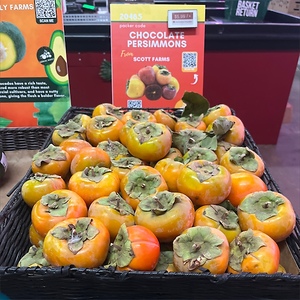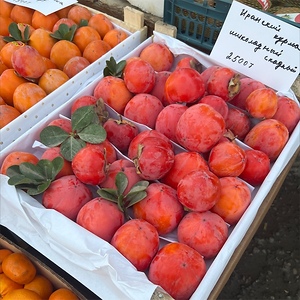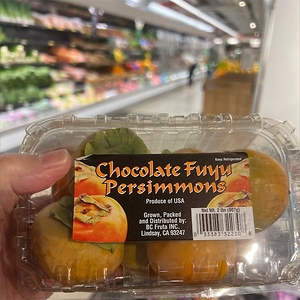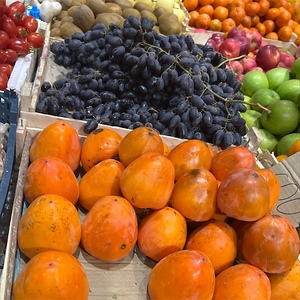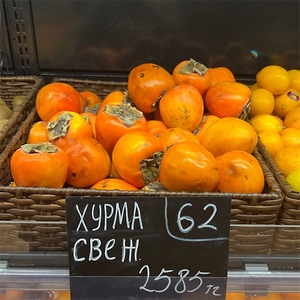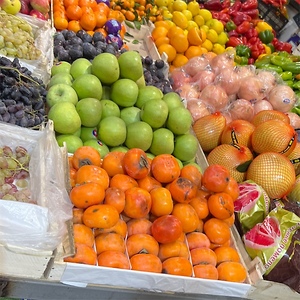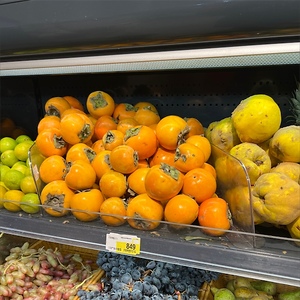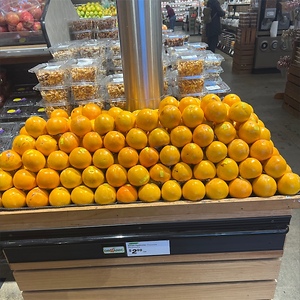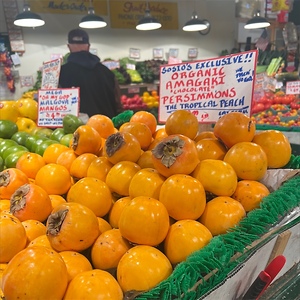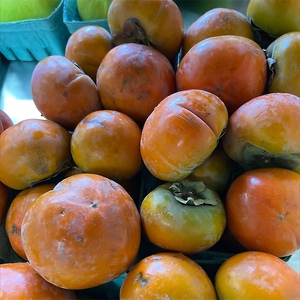

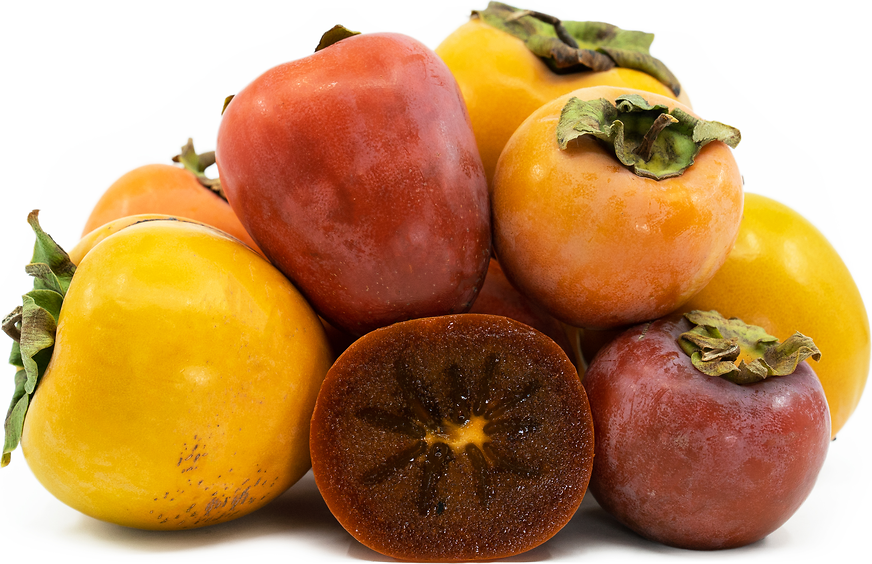
Chocolate Persimmons
Estimated Inventory, 25 lbs : 0
Description/Taste
Chocolate persimmons are small to medium-sized fruits that widely vary in appearance, depending on the specific variety, and can appear oval, spherical, to slightly flattened in shape. The skin is glossy, smooth, taut, and chewy, bearing dark orange, almost red hues, and is capped with a green, papery calyx. Underneath the surface, the flesh ranges from firm and crisp, to soft and tender, depending on the degree of ripeness, and has an aqueous, subtly grainy, jam-like consistency. If it is a pollinated fruit, dark brown speckling and spots will develop throughout the seeded, orange flesh, giving it a variegated appearance. Chocolate persimmons have a very sweet and sugary flavor with subtle spice-filled undertones. The fruits are named “chocolate” for their brown, variegated flesh, not for their taste.
Seasons/Availability
Chocolate persimmons are available in the early fall through the winter.
Current Facts
Chocolate persimmons, botanically classified as Diospyros kaki, are a rare Japanese variety belonging to the Ebenaceae family. The sweet-tasting fruits are a part of the maru grouping, which is a category that encompasses multiple brown-fleshed and non-astringent persimmon varieties. Chocolate persimmons are further classified as a pollination variant, which are fruits that require pollination to be considered palatable. When Chocolate persimmons are pollinated, the seeds excrete small amounts of alcohol, which causes chemical compounds within the flesh to clump together, giving the flesh its brown hue. Chocolate persimmons are considered to be very rare and are not commercially cultivated due to their unpredictable growth habits. Consumers also often associate the color brown with spoiling, which has made it difficult to sell the dark-hued fruits commercially. Despite their scarcity, Chocolate persimmons are highly valued for their unique, sweet flavoring, especially in Japan, and are sought after by persimmon enthusiasts around the world. The fruits can be eaten with a firmer texture, similar to the consistency of a fuyu, or they can be left to soften slightly and consumed when juicy and tender.
Nutritional Value
Chocolate persimmons are an excellent source of fiber to stimulate the digestive tract and are a significant source of vitamin A, which helps to improve skin complexion and protect against vision loss. The fruits are also a good source of vitamin C to strengthen the immune system and provide some vitamins B6, E, and K, potassium, folate, manganese, phosphorus, and copper.
Applications
Chocolate persimmons are best suited for fresh applications as the unique, dark-colored flesh is primarily consumed straight, out-of-hand to fully taste the sweet flavors. The dark parts of the flesh are the main areas that are eaten on the fruits, and the flesh can be quartered, halved, or sliced. When fresh, Chocolate persimmons can be served on appetizer plates, in fruit bowls, tossed into salads, or used as a fresh topping over ice cream. The fruits can also be utilized in some cooked applications, including baked into bread, fruit bars, pies, cakes, and tarts, cooked into pudding, simmered into compotes, or made into a syrup. Chocolate persimmons pair well with spices such as nutmeg, cinnamon, and clove, arugula, squash, meats such as bacon, prosciutto, and beef, cheeses such as parmesan, chevre, and manchego, and nuts such as almonds, pecans, and walnuts. Whole Chocolate persimmons can be kept at room temperature for a couple of days to soften, or they can be stored in the refrigerator to maintain a crisper texture.
Ethnic/Cultural Info
Persimmons are the national fruit of Japan and are grown across the country in both commercial orchards and home gardens. The beloved fall fruit has been the subject of many Japanese paintings, haikus, and stories, and when in season, many different varieties of persimmons can be seen drying in doorframes and windows, used as a decorative element, or neatly stacked in large piles in local markets for fresh use. Chocolate persimmons are known by their original name, Tsuru Noko, in Japan and are a favored, ancient variety found in home orchards. The brown-fleshed fruits are also known as “goma,” translating from Japanese to “black sesame seed,” which is a descriptor used to highlight the dark specks in the flesh. Tsuru Noko persimmons are highly revered for their sweet taste and are also used as a cross-pollinator in gardens to reduce astringency in other persimmon varieties.
Geography/History
Chocolate persimmons are native to regions of Eastern Asia, primarily in Japan, and have been cultivated via grafting for hundreds of years. The brown-fleshed varieties were believed to have been introduced into the United States in 1870 when the United States Department of Agriculture imported grafted trees from Japan. The trees were planted in California and the Southern United States for cultivation, and over time, many Japanese immigrants and private family farms also began growing the unique fruits in their home gardens. Today Chocolate persimmon varieties are rare and difficult to find in commercial markets and are primarily grown in Japan, China, Korea, and California. They may also be found through growers in South and Central America. When in season, Chocolate persimmons can be found through select retail chains and specialty grocers, but they are more likely to be discovered at local farm stands and farmer’s markets.
Recipe Ideas
Recipes that include Chocolate Persimmons. One
| KCRW |
|
Grilled Persimmon Salad |



